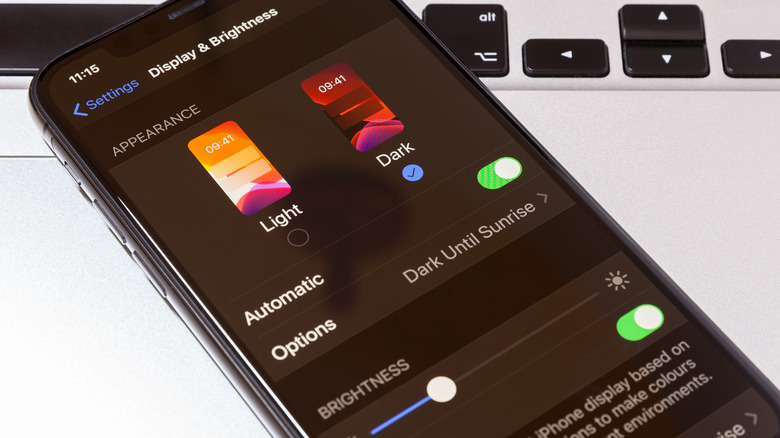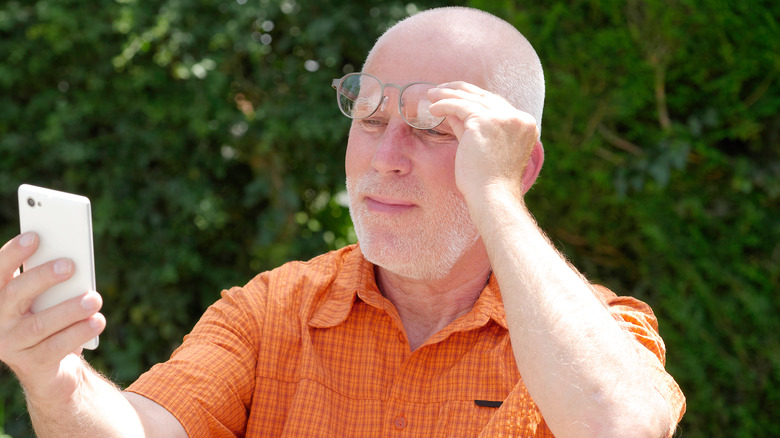Is Dark Mode Really Better For Your Eyes?
Does this scenario sound familiar? You roll over to check your phone in the middle of the night and suddenly you're hit with a bright blast of light as the screen comes to life. Because this stark transition from dark to light can be somewhat jarring to our senses, can setting our phone on dark mode better protect our eyes?
Instead of viewing traditional black text on a light-colored background, the smartphone dark mode setting reverses this layout and replaces it with white text on a dark-colored background (via All About Vision). This color swap can help minimize screen glare and decrease our exposure to blue light, according to experts at the Vision Center. This may offer potential benefits for our vision, as blue light has been linked to eye strain, dry eyes, and sleep problems.
However, Dr. Brian M. DeBroff, director of cataract and intraocular lens implant surgery at Yale Medicine Ophthalmology, tells Insider that dark mode users aren't likely to see any drastic improvements in blue light-related side effects. "Dark mode will reduce the levels of blue light that are emitted from the electronic device's screen, but probably not to an extent that will influence any damaging effect of blue light on the macula," Dr. DeBroff tells the publication.
How dark mode may make things more challenging for your eyes
For some, dark mode may sharpen the contrast between text and background, making the contents clearer to read (per Vision Center). For others, however, dark mode may actually end up making reading more challenging. Experts at All About Vision explain that when we look at a dark screen, our pupils adjust by dilating. With bright light, our vision narrows and becomes sharper. The opposite is true with dark lighting, which can reduce the clarity of smaller details.
Those diagnosed with astigmatism or myopia may also experience difficulties with dark mode. Individuals with these conditions are susceptible to halation and may experience the blurring of letters into the background. Instead, a dimmed light mode or blue-light-filtering mode may be a better fit.
So while dark mode may be easier on the eyes for some users, there are other ways one can effectively go about reducing eye strain or blue light exposure. The Vision Center suggests drinking plenty of liquids on a daily basis to help keep your body hydrated. Similarly, over-the-counter eye drops can also help keep your eyes lubricated. Additionally, try taking regular screen time breaks for periods of 20 seconds every 20 minutes. This can also include leaving your phone in another room while sleeping, as well as limiting scrolling roughly two hours prior to bedtime.


